Vietnam’s wet markets are more than just a busy an unusual market —they are the lifeblood of daily life, where culture, community, and culinary traditions converge. Stepping into one of these vibrant markets is like entering a sensory overload of colours, sounds, and smells, offering a unique window into Vietnam.
What Are Wet Markets?
You may have heard of a “wet market” only in relation to the rumours as to where Covid first come from and never really understood what it actually was. The term “wet market” relates to the actual goods sold and the environment itself. Fresh produce, live seafood, and butchered meats dominate the stalls, with the floors being constantly hosed down to maintain hygiene. Unlike supermarkets, wet markets offer a direct connection between sellers and buyers, with goods sourced from local farms, fisheries, and small-scale producers.
In Vietnam, wet markets go beyond mere functionality—they are social spaces where locals catch up on gossip, debate prices, and share recipes. They reflect the rhythms of life in both rural and urban areas, with each market bearing the distinct flavor of its community.
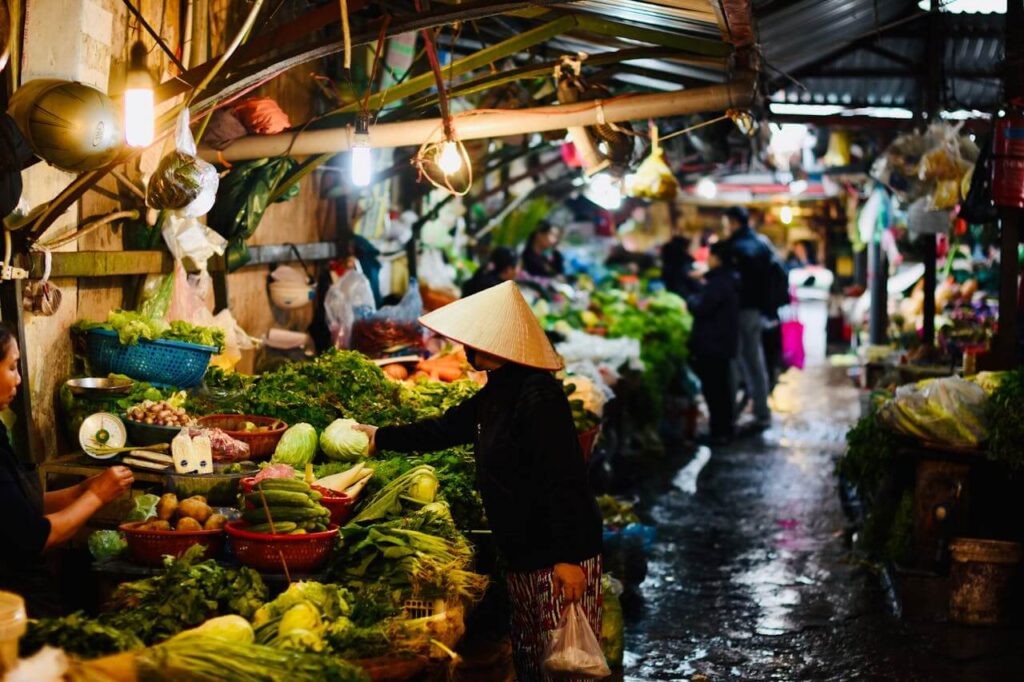
Walking into a Vietnamese wet market feels like stepping into a whirlwind of life, energy, and colour. The first thing that grabs your attention is the sheer vibrancy: piles of tropical fruits such as dragon fruit, lychee, and mango stacked high, creating a rainbow of colours that seem almost too perfect to be real. Nearby, stalls are overflowing with fresh herbs like lemongrass, basil, and mint—key ingredients in Vietnamese cooking.
The smells are unforgettable, too. There’s the salty tang of freshly caught seafood, the earthy aroma of just-picked vegetables, and the occasional funky waft of fermenting shrimp paste. The sounds pull you in further: vendors calling out prices, knives rhythmically chopping against wooden blocks, and the lively chatter of people bargaining in Vietnamese. It’s an overwhelming sensory experience but also part of what makes visiting a wet market so magical.
Explore More About Vietnam: Health Essentials for Expats: Complete Wellness Guide in Vietnam 2025
Things for sale at the wet market
Although each wet market is different, in general, you can typically find the following here :
Fresh Seafood
Thanks to Vietnam’s long coastline, seafood is everywhere. Tanks and buckets are filled with live shrimp, crabs, clams, and fish, some still flipping around. Vendors often let you pick your seafood, and many will clean or prepare it for you right there. It doesn’t get fresher than this!
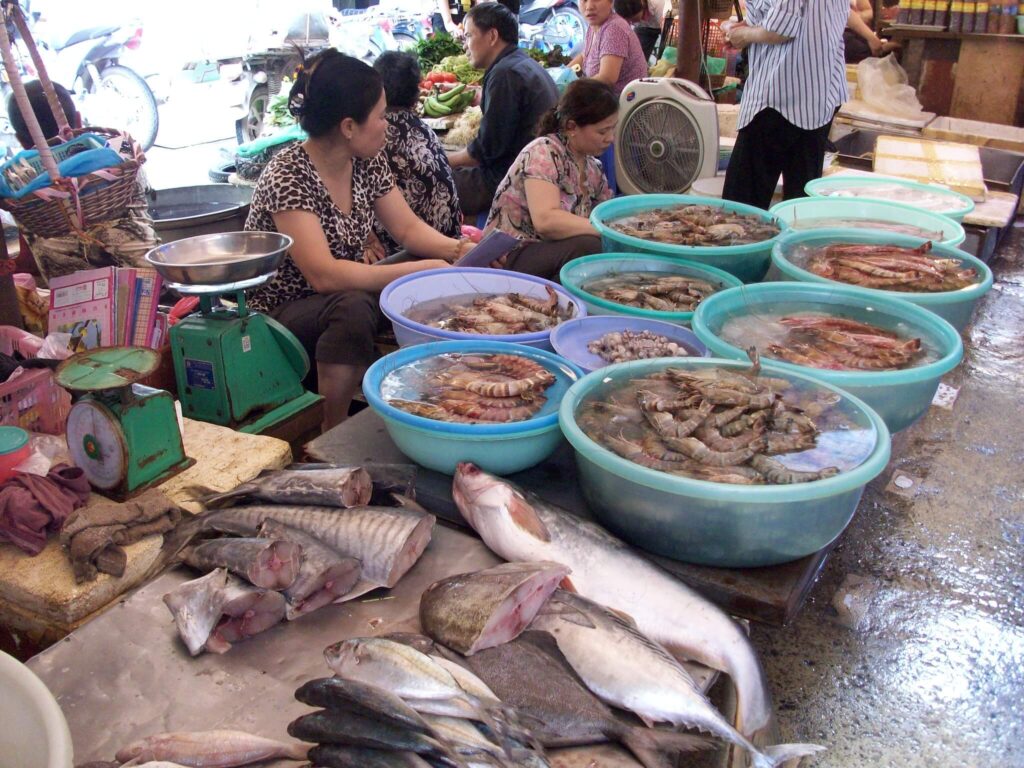
Meat and Poultry
Butchers set up shop with slabs of pork, beef, and chicken spread across sturdy wooden blocks. Whole ducks and chickens are also common, and in some markets, you can even buy live animals if you’re looking for the absolute freshest option.
Tropical Fruits
The fruit stands are like nature’s candy store. Depending on the season, you’ll see jackfruit, rambutan, papaya, and even durian (yes, the smelly one). Don’t miss seasonal treats like mangosteen or custard apples—they’re sweet, juicy, and unforgettable.
Vegetables and Herbs
Greens are everywhere. From water spinach (rau muống) to bitter melon (khổ qua), the produce is fresh, vibrant, and essential for making authentic Vietnamese dishes.
Prepared Foods
Hungry while shopping? Many markets have food stalls cooking up local favourites. You can grab a steaming bowl of pho, nibble on crispy banh xeo (savoury pancakes), or sip on a strong, sweet iced coffee (ca phe sua da). It’s street food heaven.
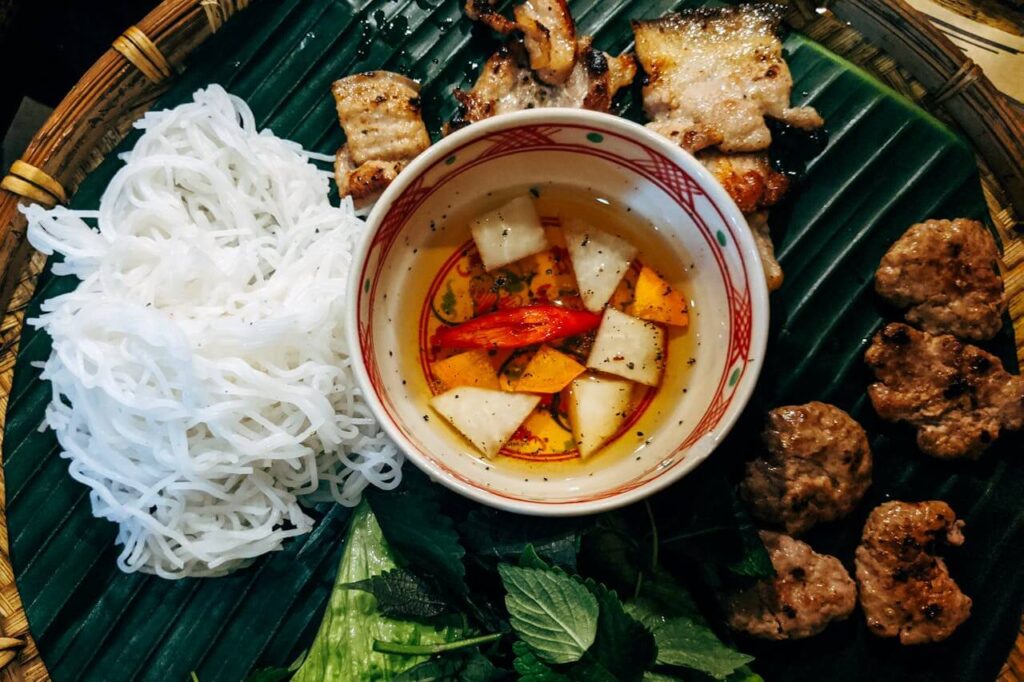
Why Wet Markets Matter
Wet markets aren’t just places to buy groceries—they’re deeply rooted in Vietnamese culture. They help preserve traditional food practices, with many ingredients sold specifically for time-honoured recipes passed down through generations.
But these markets are also about community. Many vendors have been in the same spot for years, building relationships with loyal customers. Bargaining over prices isn’t just about getting a deal—it’s a social interaction that strengthens connections.
During big festivals like Tết (Vietnamese Lunar New Year), wet markets become even livelier. Families flock to buy sticky rice for making bánh chưng or decorative kumquat trees and you can barely move for all of the crowds.
City versus Countryside Markets
Not all wet markets are the same. Their vibe and offerings depend on where they’re located.
Urban Markets
In cities like Hanoi and Ho Chi Minh City, wet markets are fast-paced and packed with people. Iconic spots like Bến Thành Market or Đồng Xuân Market attract both locals and tourists. These markets are often open all day and sell everything from fresh produce to souvenirs.
Rural Markets
In contrast, rural markets are more laid-back and often held weekly. These markets showcase local specialties, from handmade goods like woven baskets to foraged herbs you won’t find in the city. They’re also a great place to see how traditional life still thrives in Vietnam’s countryside.
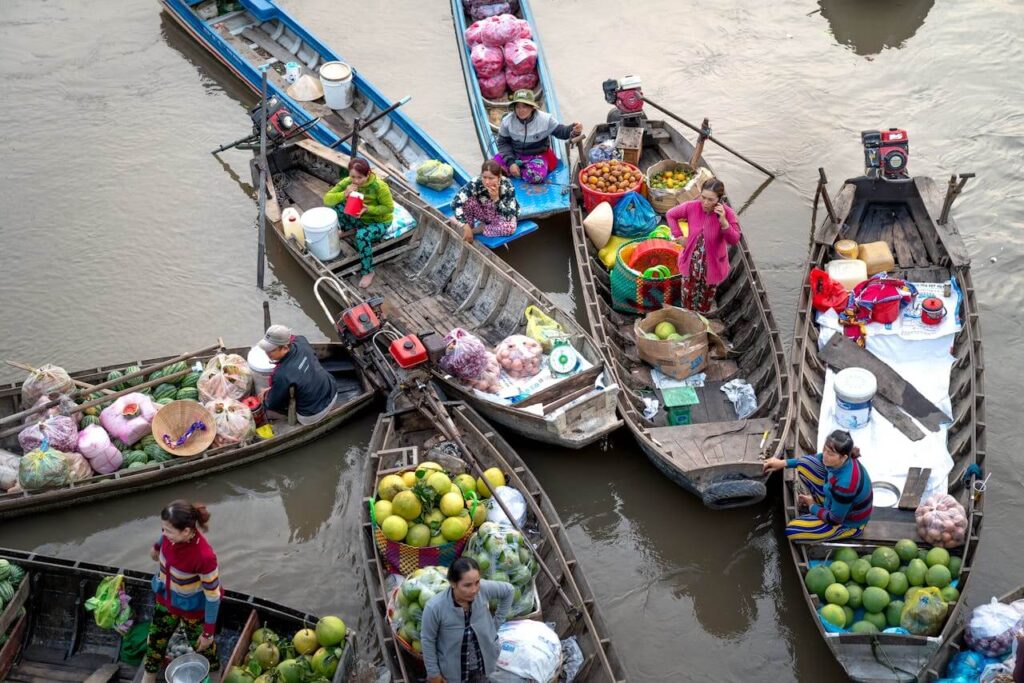
Challenges Facing Wet Markets
Despite their charm, wet markets face some challenges:
- Competition from Supermarkets – Younger generations are shifting toward air-conditioned supermarkets and online grocery shopping, drawn by convenience.
- Hygiene Concerns – Wet markets are often criticized for their cleanliness, prompting stricter regulations in many areas.
- Modernization – As cities develop, some markets have been relocated or closed to make way for new infrastructure.
Still, wet markets are adapting. Some have introduced better sanitation practices, while others cater to the growing demand for organic and locally sourced food. These efforts are helping wet markets stay relevant in a changing world.
Discover Related Guides From Stephanie Mills: Finding Your Tribe: Building an Expat Support Network in Vietnam
Tips for Visiting a Vietnamese Wet Market
If you’re new to wet markets, here are a few tips as how to make the most of your visit:
Make sure to go early because markets are busiest and freshest in the morning. Vendors are more likely to have all their goods available, and the lively energy is truly infectious. Always bring cash since most vendors don’t accept cards; carrying small denominations of Vietnamese dong will make transactions smoother.
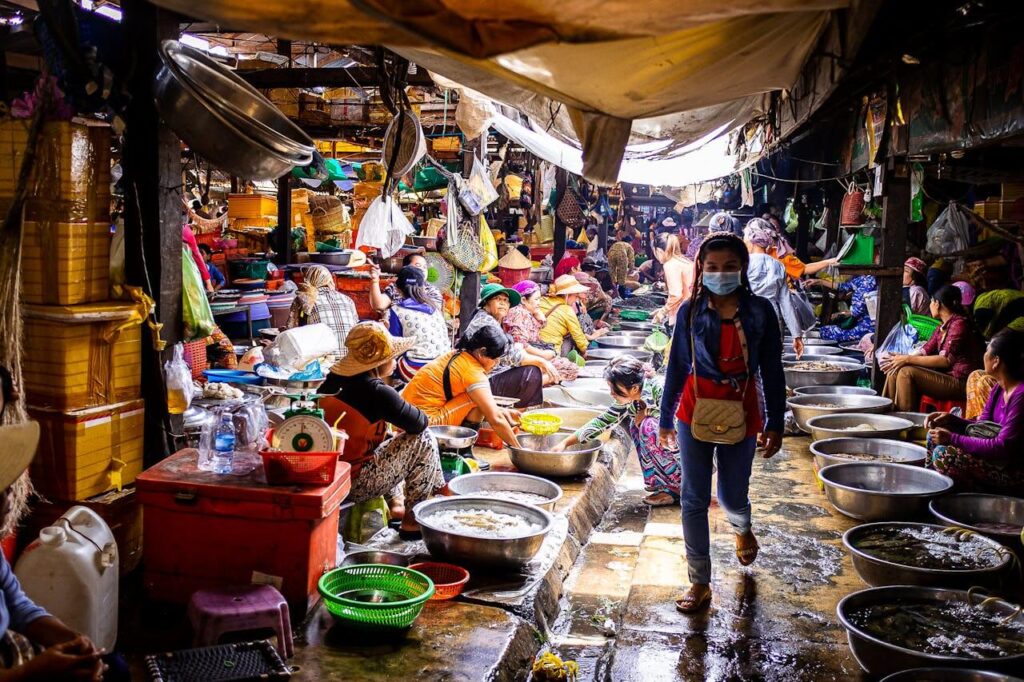
Be prepared to practice haggling, as bargaining is expected in wet markets. Keep the exchange friendly, smile, and don’t hesitate to walk away if the price isn’t right. Don’t forget to sample the street food while you’re there. Treat yourself to a quick meal from one of the food stalls—it’s a delicious and authentic way to immerse yourself in the local culture.
Lastly, respect the customs of the market. Dress modestly, especially when visiting rural markets, and avoid pointing at items with your feet, as this is considered disrespectful.
For visitors, a trip to a wet market isn’t just about shopping; it’s a window into Vietnam’s culture. Whether you’re admiring the artistry of a butcher slicing meat, sampling a piece of juicy mango, or watching a vendor expertly balance two overflowing baskets on a bamboo pole, every moment feels alive.
So, if you’re in Vietnam, take some time to explore a wet market. It’s a sensory adventure and a chance to connect with the people and traditions that make this country so special. Who knows? You might even leave with a bag full of fresh fruit and a story to tell.







